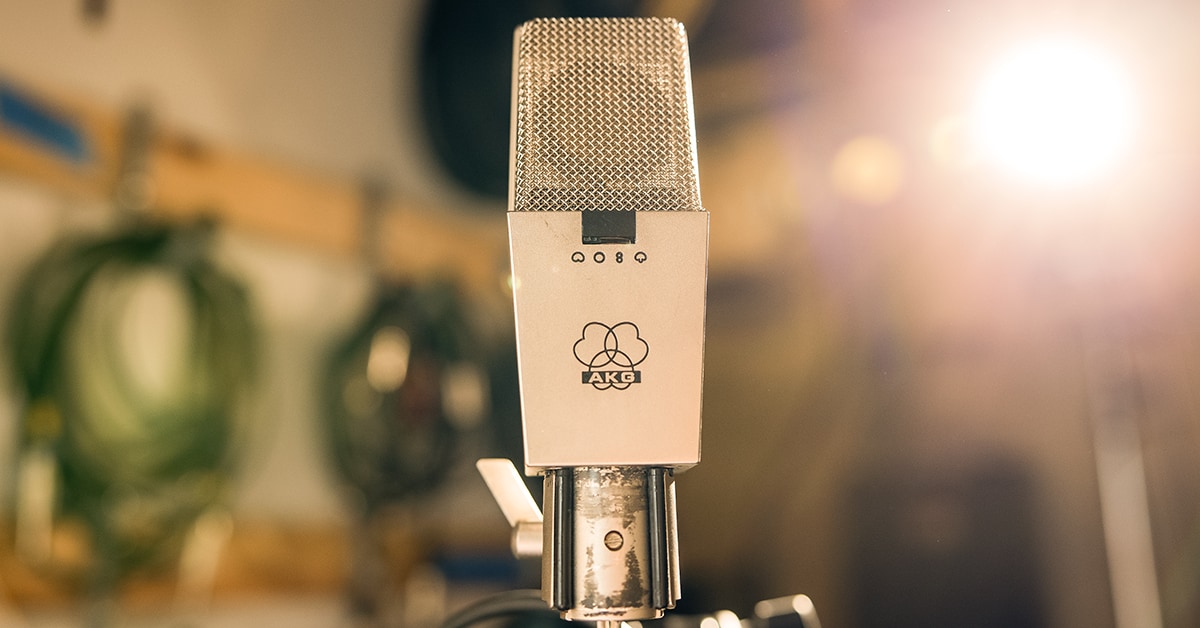Everyone’s heard it—and if you work in music, you’ve probably seen its unmistakable compact, diamond-shaped body with silver or gold grille, set up for everything from tracking vocals to recording live room ambience. Since its inception, the AKG C414 condenser microphone has captured some of the most iconic recordings—and the hearts of listeners alike. Widely beloved for its presence, clarity, pristine high end and well-balanced character, the AKG 414 has recorded classic vocal takes from Stevie Wonder to Sinéad O’Connor, as well as Billy Corgan’s acoustic and Josh Homme’s electric guitars. Stereo pairs of the 414 sit above Elton John’s piano and Terry Bozzio’s drums during live performances. When producing Taylor Swift’s Folklore and Evermore albums, Aaron Dessner miked up an upright piano with 414s—just as he’s done to record his own signature dampened piano sound with The National. It’s no mystery how the C414 has gained a reputation as one of the most versatile condenser mics of all time.
Since its debut in 1971, there have been over a dozen variations bearing the C414 name, not including other mic models in the C-Series, like the C214 and C314 large-diaphragm condensers. In this article, we’ll go over the history behind and surrounding the legend that is the 414 mic—as well as the present-day AKG C-Series models you can find here at Guitar Center.
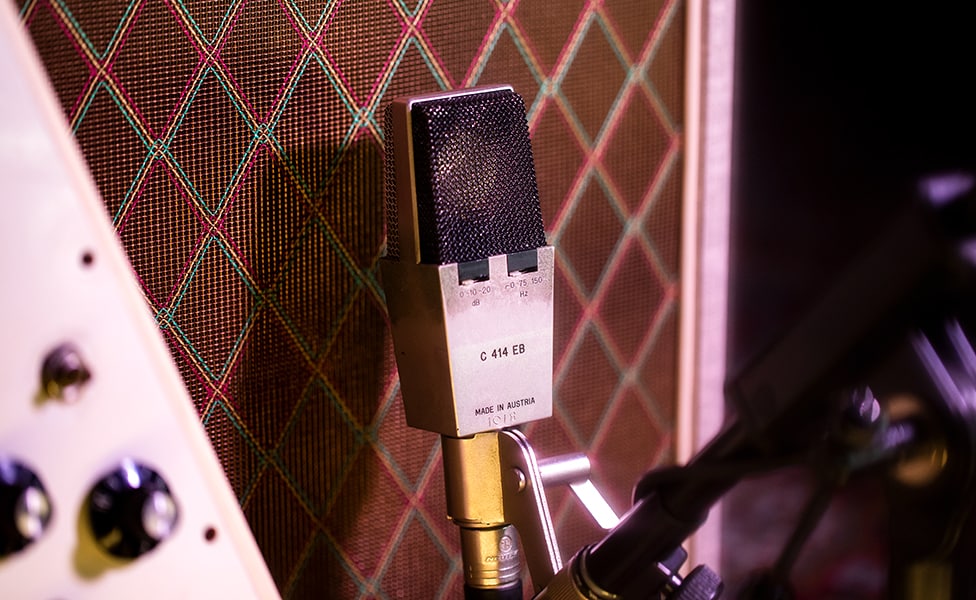
Table of Contents
Predecessors of the C414
The Groundbreaking AKG Tube Condenser—C12
First Evolutions—AKG C12A and C12B
The Solid-state C414 Precursor—AKG C412
Historical C414 Models
The Debut of the AKG C414 COMBO
Subsequent Early AKG C414 Models
Later AKG C414 Releases
Current C414 Variants
The Bright C414—AKG C414 XLII
The Dark C414—AKG C414 XLS
The Most Affordable Mic in the C-Series—AKG C214
The Newest Addition to the C-Series—AKG C314
A Modern Take on the Original Tube Classic—AKG C12 VR
Select Your C414
Predecessors of the C414
The story of the legendary AKG C414 condenser microphone begins with the founding of AKG in Vienna, Austria in 1947—and their first colossally popular C-Series condenser mic release just a few short years later. The years following the end of WWII yielded a windfall of technological advances in audio engineering, from smaller, more efficient vacuum tubes, circuits and transformers to precisely suspended condenser (also known as capacitor) capsules. Components inherited from earlier models—from the tube-powered C12 to the solid-state C412—and advancements in various technologies have played their roles in the culmination of the 414 and its many renditions.
The Groundbreaking AKG Tube Condenser—C12
Technically, the C1 was AKG’s first tube condenser mic, but only six were ever built—so the C12 tube microphone is largely seen to be the one that started it all. Originally released in 1953 as the first remote-controlled multipattern large-diaphragm condenser, the long, cylindrical C12 featured nine selectable polar patterns and was powered by a large 12AY7/6072 tube. The polar pattern could be selected via a switch on the connection between the mic and the power supply. In the beginning, the C12 was used mostly on classical recordings and broadcast, but its sublimely flattering high end and unprecedented fidelity made it a studio favorite for Frank Sinatra, Elvis Presley, Tom Petty, Alanis Morissette, Beyoncé and countless others. Geoff Emerick even used it to record Paul McCartney’s bass during his tenure with the Beatles. It was immortalized in the “We Are the World” promotional video after Quincy Jones set up a U-shaped array of a dozen C12s to capture the star-studded performance.
One of the essential ingredients that gave the C12 its tantalizing appeal was the iconic CK12 capsule. This became known as the “brass ring capsule,” nicknamed for its distinctive—you guessed it—brass ring around (and supporting) the capsule. Implemented into many subsequent AKG mic designs, the famous CK12 capsule has been coveted by engineers and producers for well over half a century.
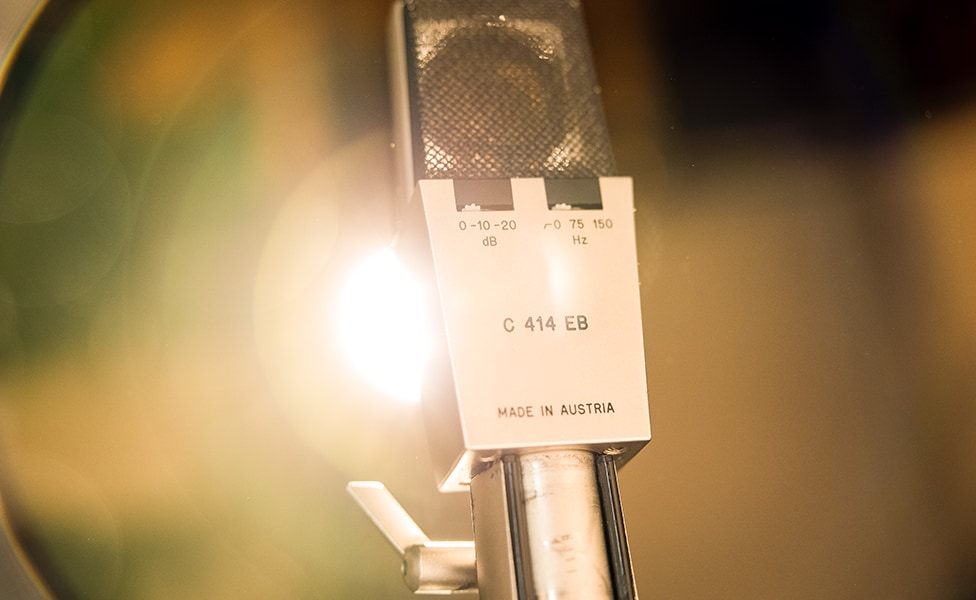
First Evolutions—AKG C12A and C12B
A radical departure from the cylindrical body of the C12, the C12A was released in 1962, with a sleeker, more modern, trapezoidal shape foretelling of the ensuing C414’s form factor. While it featured the same CK12 capsule as the original C12, the C12A’s new, compact Nuvistor tube and transformer allowed its housing to be considerably smaller and lighter, in stark contrast to the C12’s all-around imposing figure. The C12A was furnished with threading for a stand mount and an XLR output connector on its body—a revolutionary feature we take for granted in many of today’s mics. The only caveat was it used an adapter to get to XLR, which added a bulkiness and a potential weak point in its construction. Building on the C12A’s evolution, the C12B was later released with a slightly larger, plastic body and a pad switch, but was otherwise identical to its immediate antecedent.
The Solid-state C414 Precursor—C412
Designed in 1970, the C412 was a solid-state FET (Field Effect Transistor) version of the C12A featuring three polar patterns, an onboard pad switch and a CK12 capsule. It was the first mic in the C-Series to run on phantom power (it could take anywhere from 12 to 48V DC) instead of externally supplied juice. It was relatively short-lived in terms of production—partly due to its lack of enough polar pattern options for many engineers’ needs, in addition to its easily breakable plastic grille, and the fact it was prone to radio interference. However, its solid-state scheme and collection of components were a direct precursor to the 414 we all know and love.
Historical C414 Models
The Debut of the AKG C414 COMBO
The original C414 debuted in 1971 with the electrical design of the C412 and the by-then-classic CK12 capsule. Formally known as the C414 COMBO (often called the “comb” for short), it had selectable cardioid, omni, figure-8 (bi-directional, also referred to as “figure-of-8”) and hypercardioid (a very narrow pickup for avoiding spillover from other instruments) polar patterns. The 414 COMBO was released in two varieties: one with a DIN connection and the other with a standard XLR stemming from a stand adapter, like the C12A. While the C414 combs of the early ’70s were renowned for their shimmering top end, they lacked in their bass response.
Subsequent Early AKG C414 Models
AKG responded to concerns about lack of low end in 1976 with the introduction of the C414 EB (for Extended Bass). Its distinctive all-metal silver housing makes it easy to tell apart from the other 414s, though it was a pivotal step in the evolution for what was under the hood. The 414 EB came to be the first 414 model to have a built-in XLR output and the more-compact 414 aesthetic that we’re familiar with today. It had a redesigned transformer, 3-way attenuation pad—for especially loud sources like drums and guitar cabs—and 3-position bass roll-off switches. The original EB came with a brass CK12 capsule, and it’s highly sought-after for its sparkling high end to this day. However, this brass capsule was discontinued after a few years, and subsequent C414 EB models utilized nylon-fashioned capsules, producing a darker sound. Unfortunately, no distinction was made to the model number even with the differences in vital components, and the only way to tell for certain whether an EB has a brass or nylon capsule is by taking it apart and seeing for yourself.
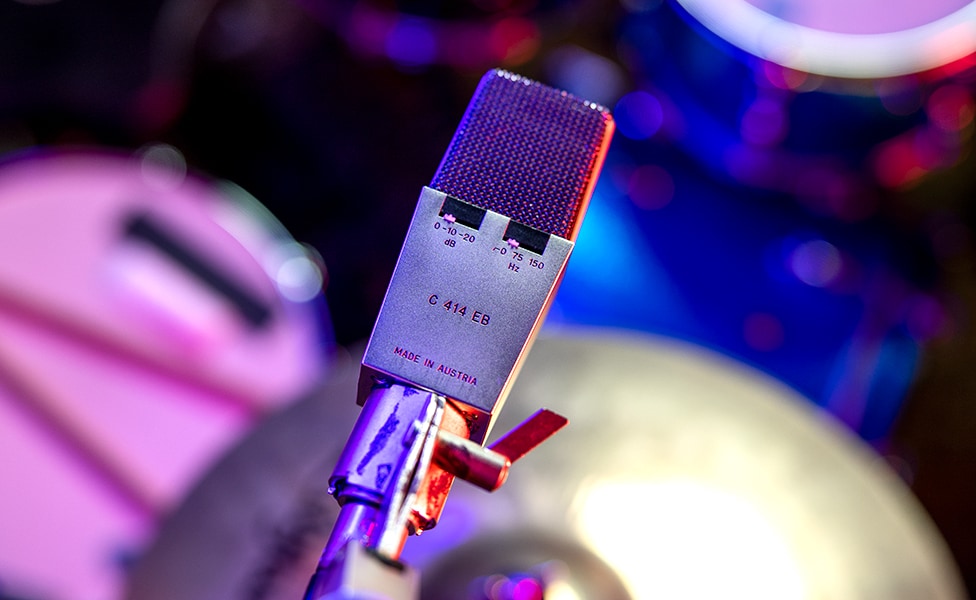
While the C414 EB took phantom power from 9V to 48V, the subsequent 1980 release, the C414 EB P48, was 48V only—hence the name—and came in a matte black housing. As a result, it was ever-so-slightly more sensitive, though it was otherwise very much alike the previous EB microphones.
In 1986, the C414 B-ULS (Ultra Linear Series) was released, and, with its gold-sputtered 1" dual-diaphragm, came widespread use in studios on virtually every instrument. Known for its impressively neutral response and lower noise floor compared to previous 414 models, it was the final 414 model equipped with a transformer. The C414 B-TL (for transformerless) did away with the transformer output stage in favor of an electronic balancing circuit, marginally increasing its max SPL handling. Its time was fleeting, and it was discontinued shortly thereafter. Fortunately for fans of the ULS, it remained in production for decades as one of the most popular microphones of all time.
Later AKG C414 Releases
In 1993, the C414 B-TL II was released, wielding not only a gold grille—the first of many 414s to do so—but also a brighter sound (i.e., an upper-frequency bump) intended to follow in the C12’s footsteps. While this went against expectations of what a 414 was “supposed to” sound like at the time, it’s become a desired golden trait that many engineers deliberately seek out when they reach for a TL II. Aside from these two significantly distinctive qualities, it picks up where the C414 B-TL left off.
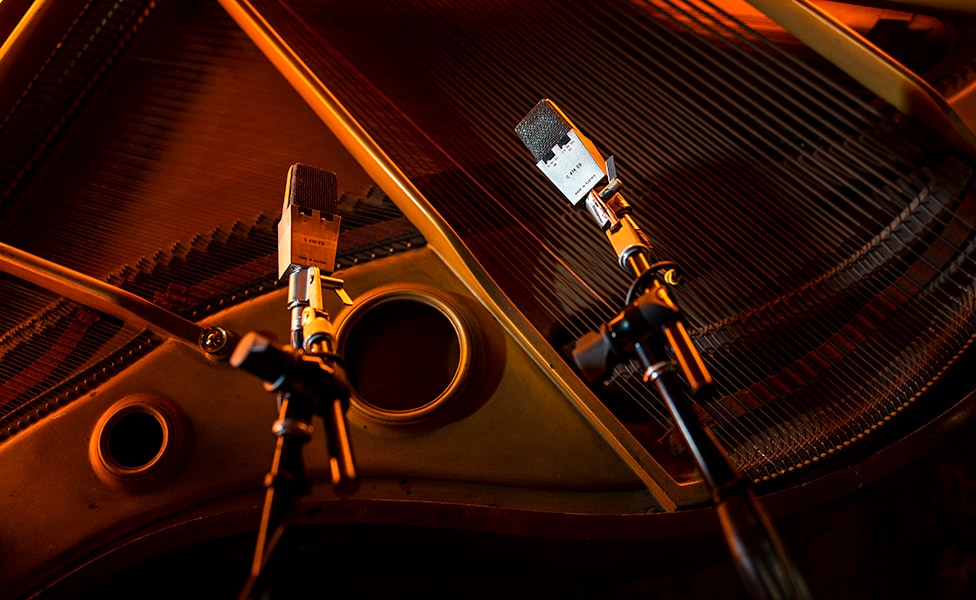
More recently, 2004 saw the introduction to the gold-grilled C414 B-XLII and silver-screened C414 B-XLS, not to be confused with the current C414 XLII and C414 XLS models, which were released in 2009. The XLII was to chase the sound of the rare C12, with a subtlety hyped 4–10kHz response, while the XLS was meant to be more akin to the widely popular C414 B-ULS for a flatter frequency curve. Each had five selectable polar patterns, which were kicked up to nine in the contemporary 414 XII and 414 XLS.
Current C414 Variants
The modern-day offerings, C414 XLII and C414 XLS, which we’ll elaborate on in the section below, are the most versatile 414s yet—each with their own unique sonic signature that gives them a darker or brighter tonality. The budget-friendly C214, latest-addition C314 and the tip-top-of-the-line C12 VR round out the current members of the AKG C-Series family of condenser mics.
The Bright C414—AKG C414 XLII
Easily distinguishable by its gold grille on the front side, the C414 XLII is known for its brighter top end compared to its XLS sibling, due to its capsule. The XLII has a subtle presence boost and spatial reproduction that harkens back to the original C12. It offers nine polar patterns and –6, –8, –18dB selectable attenuation levels—all controls that can be disabled for permanent installations and live applications. An onboard LED shows overload peaks, which serves as a good indication to consider flipping the pad switch to avoid signal clipping and possible damage to your equipment.
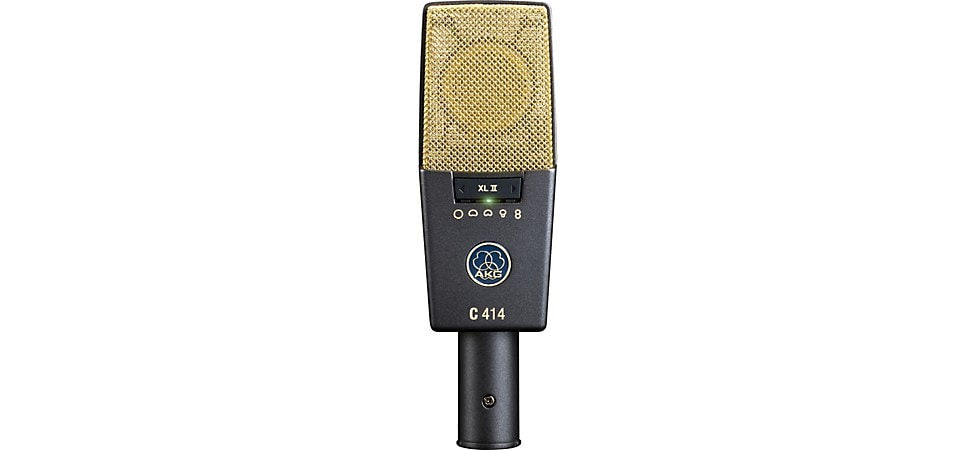
Pictured: AKG C414 XLII Reference Multi-Pattern Condenser Microphone
The AKG C414 XLII stereo matched pair is also available, if you intend on using a spaced pair, XY, ORTF (aka side-other-side), Recorderman, mid-side or any other stereo miking with near-identical frequency response.
The Dark C414—AKG C414 XLS
The C414 XLS has a similar aesthetic to XLII, but with a silver finish on the front of its grille. While it’s identical to the 414 XLII in its selectable polar pattern and pad switches, as well as its peak hold LED, its transformerless design and different capsule give it a darker, warmer sonic character that’s more reminiscent of the C414 B-ULS. The XLS is engineered for exceptionally high linearity and neutral sound, making it one of the most versatile large-diaphragm mics available.
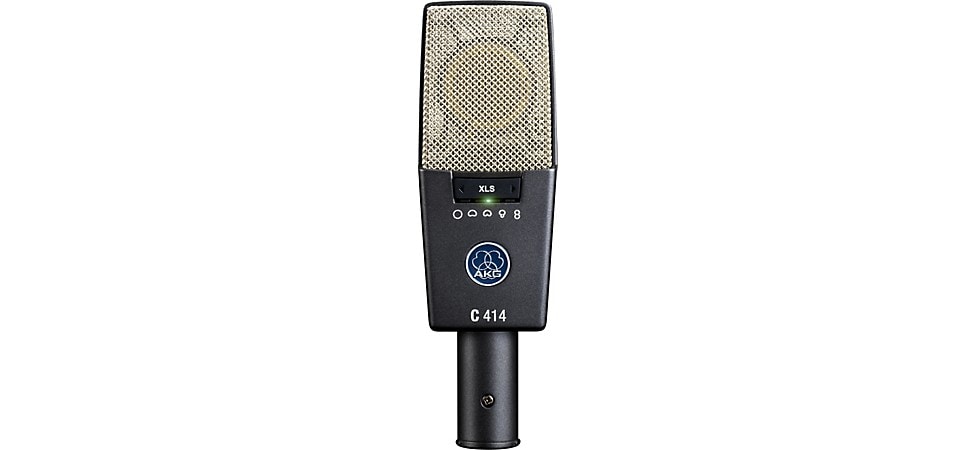
Pictured: AKG C414 XLS Reference Multi-Pattern Condenser Microphone
Like the XLII, a C414 XLS matched pair is available to make your stereo miking dreams a reality.
The Most Affordable Mic in the C-Series—AKG C214
The C214 cardioid mic is a great introduction to the celebrated AKG C-Series for budget-conscious recording engineers, producers and musicians—coming in at roughly a third of the cost of either 414 model. And its 414-inspired design is immediately apparent everywhere you look. Especially similar to the sound of the C414 XLII, the 214 combines one capsule of the C414 with patented AKG Back-Plate Technology, giving it excellent dynamics and low noise. This makes the 214 ideal for capturing all those lovely nuances of vocals and acoustic instruments that can add that touch of class your final mix. It can even handle SPL of up to 156dB with its switchable –20dB pad, making the C214 a safe and accurate option for tracking drums and in live situations. It also includes a bass-cut filter at 80Hz to keep the rumble at bay.
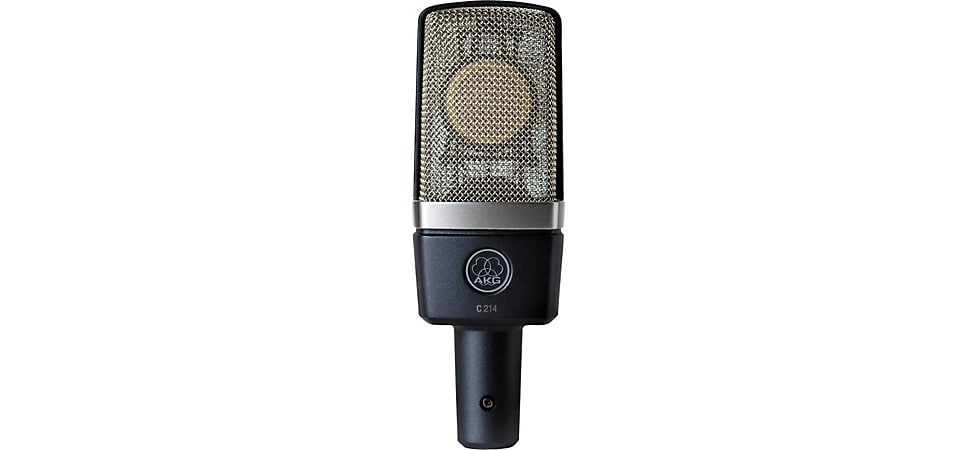
Pictured: AKG C214 Large-Diaphragm Condenser Microphone
If you plan on stereo-miking acoustic instruments or drum overheads, the C214 is also available in matched pairs. The C214 matched stereo pair is measured in AKG’s lab for minute frequency response fluctuations before being signed off by a technician to ensure your pair is as similar as possible. For those only needing a cardioid polar pattern, but who are seeking 414 XLII-style response, the C214 is an excellent, accessible option.
The Newest Addition to the C-Series—AKG C314
With its 1" dual-diaphragm capsule based on the 414 XLS, the C314 mic sits in the middle of the pack in terms of affordability. The 314’s computer-matched diaphragms ensure impeccable polar pattern accuracy, whether in omni, cardioid, supercardioid or figure-8. A bass-cut filter staves off unwanted low end, from hum to the proximity effect, saving you precious time when editing and mixing. The 314 boasts impressively low self-noise, and its integrated suspension greatly reduces risk of mechanical noise. Like the 414, it’s a true chameleon—the 314 is in its element capturing vocals, drums, piano as well as electric and acoustic guitars, while its durable scratch-resistant body makes it ideal for either studio or live applications. Another 414-inherited feature is its overload detection LED, which can be quickly ameliorated by flipping the onboard –20dB pad switch.
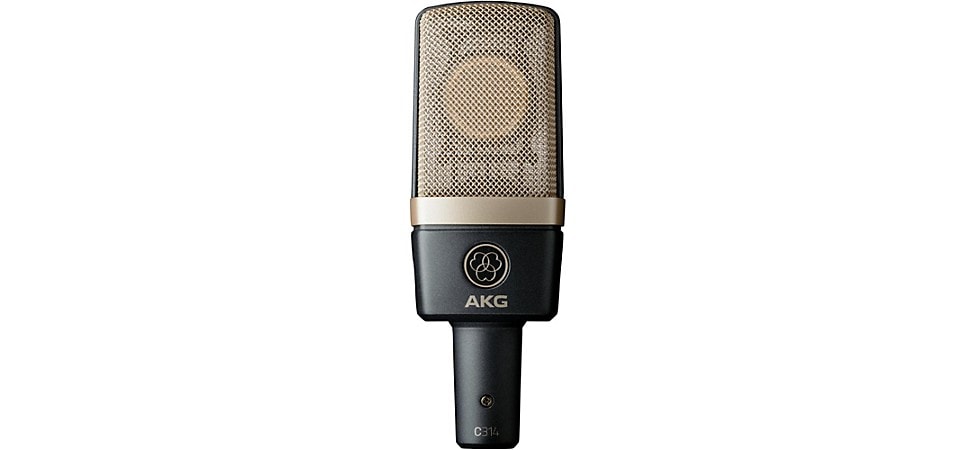
Pictured: AKG C314 Professional Multi-Pattern Condenser Microphone
As with the other current phantom-powered C-Series offerings, the AKG C314 matched stereo pair provides technician-approved assurance that your two 314 mics are frequency-matched.
A Modern Take on the Original Tube Classic—AKG C12 VR
No C-Series collection is complete without the C12, and the C12 VR tube condenser steps in to fill its present-day position with every bit of magisterial wonder as ever. The original run of the C12 was from 1953 to 1963, and remaining models are extraordinarily rare and expensive. While the modern reissue C12 VR model won’t easily fit into a shoestring budget either, its trademark sonic character, exceptionally low noise and remotely selectable nine polar patterns closely mimic the original “Holy Grail” of tube condensers. It encompasses the prized CK12 capsule and N12VR power supply with a 6072A vacuum tube.

Pictured: AKG C12 VR Reference Tube Condenser Microphone
Select Your C414
As you’re now aware, the ever-versatile C414 condenser mic—in all its forms—comes from an impressive pedigree of long-admired mics that shine with their iconic sonic and aesthetic presence. AKG has continued their tradition of crafting their C-Series microphones from the highest-quality components with thoughtful engineering, and it shows throughout their current array of 414s as well as the 214, 314 and C12 VR. Visit your local Guitar Center store to check out our selection of current AKG C414s and the rest of the C-Series family, and our knowledgeable associates will be happy to help you find the perfect one for your recording needs. If you’re on the pursuit for an earlier model, browse our collection of used and vintage microphones.
.jpeg)






